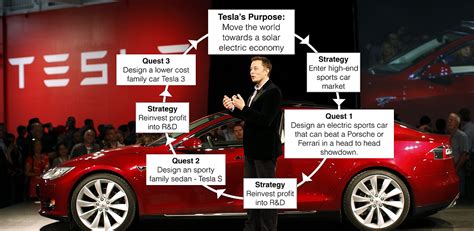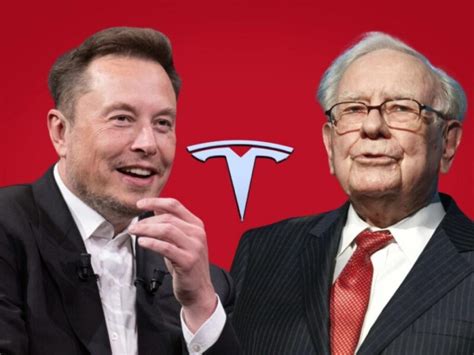
Tesla is facing a potential leadership challenge as key executives depart the company, raising concerns about the execution of Elon Musk’s ambitious long-term strategy. Drew Baglino, Senior Vice President of Powertrain and Energy Engineering, announced his departure on Monday, marking the latest in a series of high-profile exits from the electric vehicle giant.
Baglino’s exit, confirmed in a post on X, coincides with Tesla’s announcement of a 9% workforce reduction, impacting thousands of employees across the organization. This restructuring effort, coupled with the departure of a key engineering leader, has sparked speculation about the company’s ability to navigate the rapidly evolving electric vehicle market and achieve its ambitious goals in areas such as autonomous driving, robotics, and energy solutions. The timing is particularly sensitive as Tesla grapples with slowing sales growth, increased competition, and production challenges.
Executive Exodus and Restructuring Efforts
The departure of Drew Baglino represents a significant loss for Tesla’s engineering leadership. Baglino, who joined Tesla in 2006, was instrumental in the development of the company’s battery technology and energy products, playing a key role in scaling production and improving performance. His responsibilities encompassed a wide range of critical areas, including battery design, powertrain engineering, and energy storage solutions. “Been an honor working with the incredible people at Tesla over the past 18 years. Learned so much together through the hard times and the amazing times,” Baglino stated in his farewell message.
His departure follows the exit of Rohan Patel, Tesla’s Vice President for Public Policy and Business Development, who also announced his departure on Monday. While Patel’s reasons for leaving were not explicitly stated, his role was crucial in navigating the complex regulatory landscape and fostering strategic partnerships. The simultaneous departure of two high-ranking executives underscores the internal pressures and strategic shifts occurring within Tesla.
These exits coincide with a company-wide restructuring plan aimed at streamlining operations and reducing costs. Elon Musk, in an internal memo, announced a reduction of over 10% of Tesla’s global workforce, citing the need to “reduce costs and increase productivity.” However, the actual percentage appears to be around 9%. This decision reflects the challenges Tesla faces in balancing growth with profitability amid increasing competition and macroeconomic uncertainty. The workforce reduction is expected to impact various departments, potentially affecting the company’s ability to execute key projects and maintain its technological edge.
Impact on Tesla’s Strategic Initiatives
The leadership changes and restructuring efforts raise questions about the future of Tesla’s ambitious strategic initiatives. Musk’s vision for Tesla extends beyond electric vehicles, encompassing autonomous driving, robotics, energy storage, and even artificial intelligence. These initiatives require significant investment, engineering expertise, and effective execution. The departure of key leaders like Baglino and Patel, coupled with workforce reductions, could potentially slow down progress in these critical areas.
Specifically, Baglino’s departure could impact Tesla’s efforts to develop next-generation battery technology, a crucial component for improving vehicle range, reducing costs, and enhancing energy storage capabilities. His deep understanding of battery chemistry, manufacturing processes, and energy systems was invaluable to Tesla’s innovation efforts. Similarly, Patel’s departure could affect Tesla’s ability to navigate regulatory hurdles, secure government incentives, and forge strategic partnerships in key markets. His expertise in public policy and business development was essential for expanding Tesla’s presence and influencing industry standards.
The workforce reduction could also impact Tesla’s ability to attract and retain top talent. The company has long been known for its demanding work environment and ambitious goals, which have attracted highly skilled engineers and innovators. However, the recent layoffs and leadership changes could create uncertainty and erode morale, potentially making it more difficult for Tesla to compete for talent in the long term.
Market Reaction and Investor Concerns
The news of executive departures and workforce reductions has been met with concern by investors and analysts. Tesla’s stock price has been under pressure in recent months, reflecting concerns about slowing sales growth, increased competition, and production challenges. The leadership changes and restructuring efforts have added to these concerns, raising questions about the company’s ability to navigate the current market environment and execute its long-term strategy.
Analysts have expressed concerns about the potential impact on Tesla’s innovation pipeline and its ability to maintain its technological lead. The departure of key engineering leaders could slow down the development of new products and technologies, potentially giving competitors an advantage. The workforce reduction could also impact Tesla’s ability to ramp up production and meet demand for its existing vehicles.
Furthermore, the restructuring efforts could signal a shift in Tesla’s strategic priorities. The company may be forced to prioritize short-term profitability over long-term growth, potentially delaying or scaling back investments in ambitious projects such as autonomous driving and robotics. This shift could disappoint investors who have long been drawn to Tesla’s disruptive vision and its potential to revolutionize multiple industries.
Challenges and Opportunities Ahead
Despite the challenges, Tesla remains a dominant player in the electric vehicle market and possesses significant strengths. The company has a strong brand, a loyal customer base, and a vast charging network. Tesla also has a track record of innovation and a proven ability to overcome obstacles.
Looking ahead, Tesla faces several key challenges. The company needs to address slowing sales growth, increase production efficiency, and navigate increasing competition from established automakers and new entrants. Tesla also needs to continue investing in research and development to maintain its technological lead and develop new products and services.
However, Tesla also has significant opportunities. The electric vehicle market is expected to continue to grow rapidly in the coming years, driven by increasing consumer demand, government incentives, and stricter emission regulations. Tesla is well-positioned to capitalize on this growth, provided it can address its internal challenges and execute its strategic initiatives effectively. The company’s investments in battery technology, autonomous driving, and energy storage could also create new revenue streams and further diversify its business. The anticipated release of new models and technological advancements will likely be critical.
Musk’s Response and Future Outlook
Elon Musk has acknowledged the challenges facing Tesla and has emphasized the need for the company to adapt and evolve. He has stated that the restructuring efforts are necessary to ensure Tesla’s long-term success and that the company remains committed to its ambitious goals. Musk has also expressed confidence in Tesla’s ability to overcome its challenges and continue to innovate and grow.
However, Musk’s leadership style and his involvement in multiple ventures have also come under scrutiny. Some analysts have questioned whether Musk can effectively manage Tesla while also overseeing other companies such as SpaceX and X (formerly Twitter). His frequent pronouncements on social media have also been a source of controversy, occasionally impacting Tesla’s stock price and brand image.
The future of Tesla will depend on its ability to navigate these challenges and capitalize on its opportunities. The company needs to streamline its operations, improve its execution, and maintain its technological lead. Tesla also needs to address investor concerns and reassure the market that it remains on track to achieve its ambitious goals. The coming months and years will be critical for Tesla as it seeks to solidify its position as the leading electric vehicle manufacturer and a pioneer in sustainable energy solutions.
Tesla’s Battery Day Promises and Current Reality
Tesla’s 2020 Battery Day was a highly anticipated event where the company unveiled ambitious plans to revolutionize battery technology and manufacturing. Key promises included the development of a new “tabless” 4680 battery cell, which Tesla claimed would significantly increase energy density, power output, and reduce production costs. Tesla also outlined plans to vertically integrate its battery production, from raw material extraction to cell manufacturing, aiming to achieve unprecedented scale and cost efficiency.
However, progress on these ambitious goals has been slower than initially projected. The 4680 battery cell has faced production challenges, and Tesla has struggled to ramp up manufacturing to meet demand. While Tesla has made progress in vertical integration, it still relies on external suppliers for a significant portion of its battery materials. The cost reductions promised at Battery Day have also not fully materialized, as Tesla continues to face inflationary pressures and supply chain constraints.
The departure of Drew Baglino, who played a key role in Tesla’s battery development efforts, raises further questions about the company’s ability to achieve its battery technology goals. His expertise and leadership will be difficult to replace, and his departure could potentially slow down progress on critical projects.
Competition Intensifies in the EV Market
Tesla’s dominance in the electric vehicle market is increasingly challenged by established automakers and new entrants. Companies like General Motors, Ford, Volkswagen, and Hyundai have invested heavily in electric vehicle development and are launching compelling new models that compete directly with Tesla’s vehicles. These competitors have the advantage of established manufacturing infrastructure, extensive dealer networks, and strong brand recognition.
New entrants such as Rivian, Lucid, and Nio are also disrupting the market with innovative electric vehicles and business models. These companies are targeting specific segments of the market, such as luxury electric vehicles and electric pickup trucks, and are offering unique features and technologies that differentiate them from Tesla.
The increased competition is putting pressure on Tesla to innovate faster, reduce costs, and improve its product quality. Tesla needs to continue to differentiate itself from its competitors by offering superior technology, performance, and customer experience. The company also needs to expand its product lineup to address a wider range of customer needs and preferences.
The Impact of Economic Headwinds
Tesla, like other automakers, is facing significant economic headwinds. Inflation, rising interest rates, and supply chain disruptions are all impacting the cost of production and the demand for vehicles. These economic challenges are putting pressure on Tesla’s profitability and its ability to invest in future growth.
The rising cost of raw materials, such as lithium and nickel, is increasing the cost of battery production. Supply chain disruptions are also impacting the availability of key components, such as semiconductors, which are essential for electric vehicle manufacturing.
Rising interest rates are making it more expensive for consumers to finance vehicle purchases, which is dampening demand for electric vehicles. Inflation is also eroding consumer purchasing power, making it more difficult for consumers to afford new cars.
Tesla needs to navigate these economic headwinds by reducing costs, improving efficiency, and offering more affordable vehicle options. The company also needs to manage its supply chain effectively to ensure the availability of key components.
FAQ
1. Why are executives leaving Tesla?
The reasons for the executive departures are not explicitly stated but likely involve a combination of factors. These include strategic disagreements, internal pressures related to the demanding work environment, the company’s restructuring and cost-cutting measures, and potentially new opportunities outside of Tesla. The exits of Drew Baglino and Rohan Patel occurring simultaneously hints at possible systemic issues or significant shifts within the company’s operational structure.
2. What impact will the workforce reduction have on Tesla?
The workforce reduction of approximately 9% aims to reduce costs and increase productivity, but it may also impact Tesla’s innovation pipeline and its ability to execute on key projects. Layoffs could lead to a loss of institutional knowledge and expertise, potentially slowing down the development of new technologies and products. Moreover, it may affect morale and make it more difficult to attract and retain top talent in the future.
3. How will these changes affect Tesla’s stock price?
The executive departures and workforce reduction have already contributed to concerns among investors, putting downward pressure on Tesla’s stock price. The uncertainty surrounding the company’s leadership and strategic direction may continue to weigh on the stock in the short term. However, if Tesla can demonstrate its ability to navigate these challenges and maintain its technological lead, the stock could recover.
4. What are the main challenges facing Tesla right now?
Tesla faces several significant challenges:
- Slowing sales growth in key markets.
- Increasing competition from established automakers and new EV entrants.
- Production challenges related to new technologies like the 4680 battery cell.
- Economic headwinds, including inflation and supply chain disruptions.
- Maintaining innovation and technological leadership amid internal restructuring.
5. What are Tesla’s main opportunities for future growth?
Despite the challenges, Tesla has several significant opportunities:
- Continued growth in the global electric vehicle market.
- Expansion into new markets and product segments (e.g., energy storage, robotics).
- Advancements in autonomous driving technology.
- Vertical integration of battery production to reduce costs and improve performance.
- Leveraging its strong brand and loyal customer base.
Tesla’s Autonomous Driving Ambitions in Jeopardy?
One of the most ambitious projects at Tesla is the development of full self-driving (FSD) technology. Elon Musk has repeatedly predicted that Tesla will achieve full autonomy, but the company has faced numerous challenges and delays. The departure of key engineering leaders and the workforce reduction could further slow down progress on this critical initiative.
The development of FSD requires massive amounts of data, sophisticated algorithms, and extensive testing. Tesla has been relying on its fleet of vehicles to collect data and train its AI models. However, the company has also faced scrutiny over the safety of its FSD system, with regulators investigating several accidents involving Tesla vehicles operating in autonomous mode.
The success of Tesla’s FSD program is crucial for the company’s long-term growth. Full autonomy would not only enhance the driving experience but also enable new business models, such as robotaxis and autonomous delivery services. However, the challenges are significant, and Tesla faces stiff competition from other companies, such as Waymo and Cruise, which are also developing autonomous driving technology.
Tesla’s Energy Business Under Scrutiny
In addition to electric vehicles, Tesla also has a significant energy business, which includes solar panels, energy storage systems, and virtual power plants. Tesla’s energy business has the potential to generate significant revenue and contribute to the company’s overall profitability. However, the energy business has also faced challenges, including inconsistent installation quality, regulatory hurdles, and competition from other energy providers.
The departure of Drew Baglino, who played a key role in Tesla’s energy engineering efforts, could impact the company’s ability to develop new energy products and scale up its energy business. His expertise in battery technology and energy systems was essential for Tesla’s innovation efforts.
Tesla needs to address the challenges facing its energy business and focus on improving the quality of its products and services. The company also needs to navigate the complex regulatory landscape and forge strategic partnerships with utilities and other energy providers.
The Role of Elon Musk’s Leadership
Elon Musk’s leadership has been both a strength and a weakness for Tesla. His visionary leadership and relentless pursuit of innovation have been instrumental in Tesla’s success. However, his demanding leadership style and his involvement in multiple ventures have also created challenges.
Musk’s frequent pronouncements on social media have sometimes been controversial, impacting Tesla’s stock price and brand image. His focus on ambitious projects, such as colonizing Mars, has also raised questions about his ability to effectively manage Tesla.
Tesla needs to find a balance between Musk’s visionary leadership and the need for sound management and execution. The company needs to empower its leaders and create a culture of collaboration and accountability.
Financial Performance and Future Projections
Tesla’s financial performance has been impressive in recent years, but the company faces increasing pressure to maintain its growth trajectory. Tesla’s revenue has grown rapidly, but its profitability has been more volatile. The company faces increasing competition, rising costs, and economic headwinds.
Analysts have mixed opinions about Tesla’s future prospects. Some analysts believe that Tesla will continue to dominate the electric vehicle market and achieve its ambitious goals. Other analysts are more skeptical, citing concerns about competition, execution, and Musk’s leadership.
Tesla’s future financial performance will depend on its ability to navigate these challenges and capitalize on its opportunities. The company needs to continue to innovate, reduce costs, and improve its efficiency. Tesla also needs to manage its supply chain effectively and address investor concerns.
Tesla’s Culture and Employee Morale
Tesla has long been known for its demanding work environment and its culture of innovation. However, the recent layoffs and leadership changes could impact employee morale and make it more difficult to attract and retain top talent.
Tesla needs to create a more supportive and inclusive work environment. The company needs to invest in employee training and development and provide opportunities for career advancement. Tesla also needs to address concerns about work-life balance and ensure that employees are treated fairly.
A positive and engaged workforce is essential for Tesla’s long-term success. The company needs to create a culture that attracts and retains top talent and empowers employees to contribute their best work.
Sustainability and Environmental Impact
Tesla’s mission is to accelerate the world’s transition to sustainable energy. The company’s electric vehicles and energy products help to reduce greenhouse gas emissions and combat climate change.
Tesla is committed to sustainability and has implemented various environmental initiatives. The company uses renewable energy to power its factories and recycles its batteries. Tesla also works with suppliers to reduce their environmental impact.
Tesla’s sustainability efforts are not only good for the environment but also good for business. Consumers are increasingly demanding sustainable products and services, and Tesla is well-positioned to meet this demand.
Conclusion
Tesla is at a critical juncture. The company faces significant challenges, including executive departures, workforce reductions, increased competition, and economic headwinds. However, Tesla also has significant opportunities, including a growing electric vehicle market, advancements in autonomous driving technology, and a strong brand.
Tesla’s future will depend on its ability to navigate these challenges and capitalize on its opportunities. The company needs to streamline its operations, improve its execution, and maintain its technological lead. Tesla also needs to address investor concerns and reassure the market that it remains on track to achieve its ambitious goals. The success or failure in the execution of their short and long-term plans will define their future.









